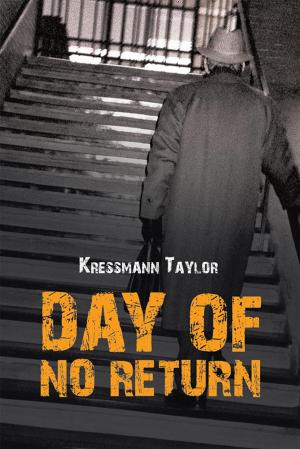| Author: | Janice M. Spangenburg | ISBN: | 9781469122731 |
| Publisher: | Xlibris US | Publication: | January 23, 2007 |
| Imprint: | Xlibris US | Language: | English |
| Author: | Janice M. Spangenburg |
| ISBN: | 9781469122731 |
| Publisher: | Xlibris US |
| Publication: | January 23, 2007 |
| Imprint: | Xlibris US |
| Language: | English |
Witnessing first hand how the federal government works from an active stint in the Navy and continuing it with federal service gave me the ability to see what was awry in each organization. At the 12 year mark, I saw so much that made me ponder what could be done differently in organizations. When I was an intern and went through downsizing it gave me a deep appreciation for how the people were treated and how management was at the forefront of decision making and outcomes for the people. That led me to one of the most important works of my life to look at downsizing and how it was handled in federal organizations.
When I started to research this organizational ailment I realized that even the Comptroller General, David Walker felt that there was a human capital crisis in the government. He said that it threatened national security (Walker, 2001; Voinovich, 2001). Unfortunately, the government and many other employers have all too often treated their employees as a cost to be cut rather than an asset to be valued (Walker, 2001). A U. S. General Accounting Office (GAO) (2000) study reported that many of the human capital problems that the Department of Defense (DOD) deals with today are the result of its approach to downsizing in the early 1990s (GAO). This outcome results in layoff survivors who possess an emotive outcome inherent with being a survivor, incurring layoff survivor sickness and being among the organizations walking wounded. As organizations change, downsizing will continue and management and leadership will play a crucial role in the future of downsizing and its impact on the relationships and behaviors of employees (leader and member) (ONeill & Lenn, 1995).
The federal government calls it a buzz word like transformation or rightsizing and management thinks that they have done something right. I often wondered how these managers could cut the organization support ranks to the bone and have no regard for how the private sector dealt with the outcome of these decisions that were not always the best. My passion for the way the government managed was sparked by a meeting and presentation by Dr. Paul Light, who informed me well about what the government was doing. After that, I was attending courses at the Defense Acquisition University at Ft Belvoir, I spent many hours in the library and did some research on this subject. One day I found an article that dealt with Leader Member Exchange (LMX), Organizational Citizenship Behavior (OCB) and Organizational Commitment (OC) written by an Air Force Major, Yolanda Truckenbrodt. This book extends the study by Dr. Yolanda Truckenbrodt (2000) who provided an implication on her empirical examination of the quality of the relationship of the leader-member exchange, organizational citizenship behavior, and organizational commitment constructs that a replication should be done on civilian federal workers. The study that I did extends further to include the population of federal survivors in a downsized organization. The ultimate goal was to examine the implications of downsizing by the federal government within a theoretical framework that focuses on civilians in the largest aspect of the federal workforce, the DOD who represent resilience and continuity.
The Problem with Downsizing
Allen, Freeman, Russell, Reizenstein, and Rentz (2001) studied 106 managers who experienced downsizing and provided data regarding organizational commitment, turnover intentions, job involvement, role clarity, role overload, satisfaction with top management, and satisfaction with job security at three different times. Although the results generally indicated that downsizing had a significant impact on work attitudes that the impact varied over time, and the initial impact was generally negative, also indicated that changes related to satisfaction with top management and job security were significantly related to changes in organizational commitment.
Witnessing first hand how the federal government works from an active stint in the Navy and continuing it with federal service gave me the ability to see what was awry in each organization. At the 12 year mark, I saw so much that made me ponder what could be done differently in organizations. When I was an intern and went through downsizing it gave me a deep appreciation for how the people were treated and how management was at the forefront of decision making and outcomes for the people. That led me to one of the most important works of my life to look at downsizing and how it was handled in federal organizations.
When I started to research this organizational ailment I realized that even the Comptroller General, David Walker felt that there was a human capital crisis in the government. He said that it threatened national security (Walker, 2001; Voinovich, 2001). Unfortunately, the government and many other employers have all too often treated their employees as a cost to be cut rather than an asset to be valued (Walker, 2001). A U. S. General Accounting Office (GAO) (2000) study reported that many of the human capital problems that the Department of Defense (DOD) deals with today are the result of its approach to downsizing in the early 1990s (GAO). This outcome results in layoff survivors who possess an emotive outcome inherent with being a survivor, incurring layoff survivor sickness and being among the organizations walking wounded. As organizations change, downsizing will continue and management and leadership will play a crucial role in the future of downsizing and its impact on the relationships and behaviors of employees (leader and member) (ONeill & Lenn, 1995).
The federal government calls it a buzz word like transformation or rightsizing and management thinks that they have done something right. I often wondered how these managers could cut the organization support ranks to the bone and have no regard for how the private sector dealt with the outcome of these decisions that were not always the best. My passion for the way the government managed was sparked by a meeting and presentation by Dr. Paul Light, who informed me well about what the government was doing. After that, I was attending courses at the Defense Acquisition University at Ft Belvoir, I spent many hours in the library and did some research on this subject. One day I found an article that dealt with Leader Member Exchange (LMX), Organizational Citizenship Behavior (OCB) and Organizational Commitment (OC) written by an Air Force Major, Yolanda Truckenbrodt. This book extends the study by Dr. Yolanda Truckenbrodt (2000) who provided an implication on her empirical examination of the quality of the relationship of the leader-member exchange, organizational citizenship behavior, and organizational commitment constructs that a replication should be done on civilian federal workers. The study that I did extends further to include the population of federal survivors in a downsized organization. The ultimate goal was to examine the implications of downsizing by the federal government within a theoretical framework that focuses on civilians in the largest aspect of the federal workforce, the DOD who represent resilience and continuity.
The Problem with Downsizing
Allen, Freeman, Russell, Reizenstein, and Rentz (2001) studied 106 managers who experienced downsizing and provided data regarding organizational commitment, turnover intentions, job involvement, role clarity, role overload, satisfaction with top management, and satisfaction with job security at three different times. Although the results generally indicated that downsizing had a significant impact on work attitudes that the impact varied over time, and the initial impact was generally negative, also indicated that changes related to satisfaction with top management and job security were significantly related to changes in organizational commitment.















